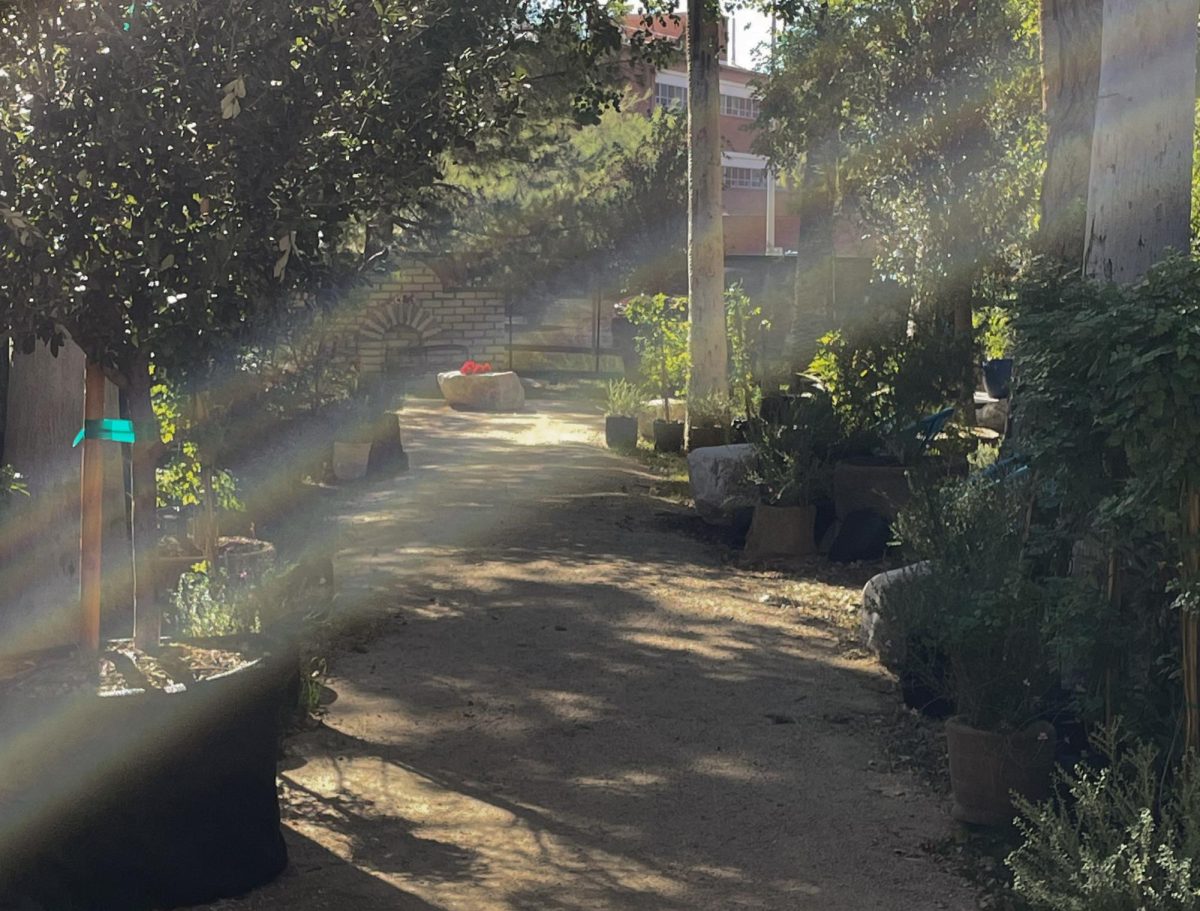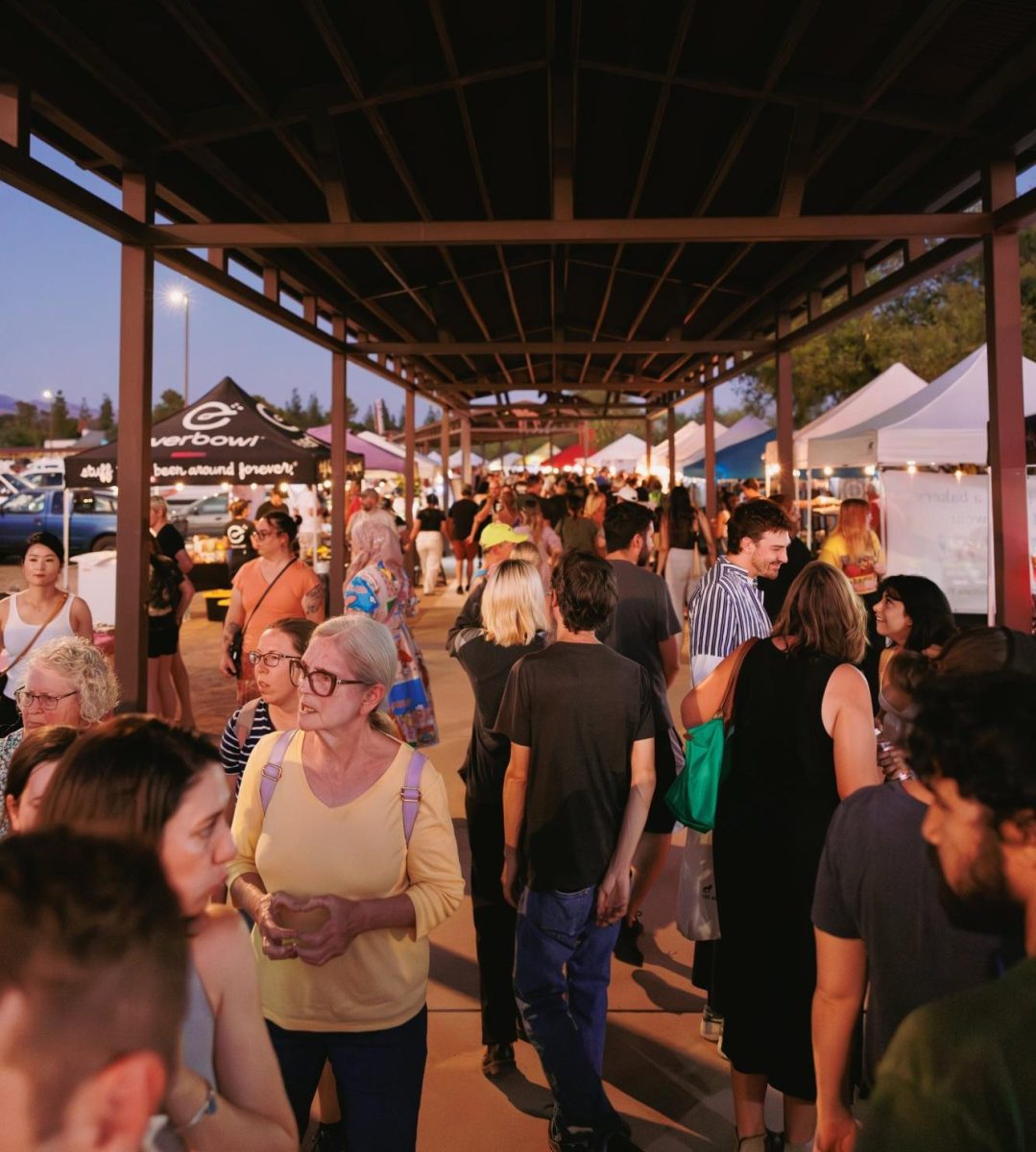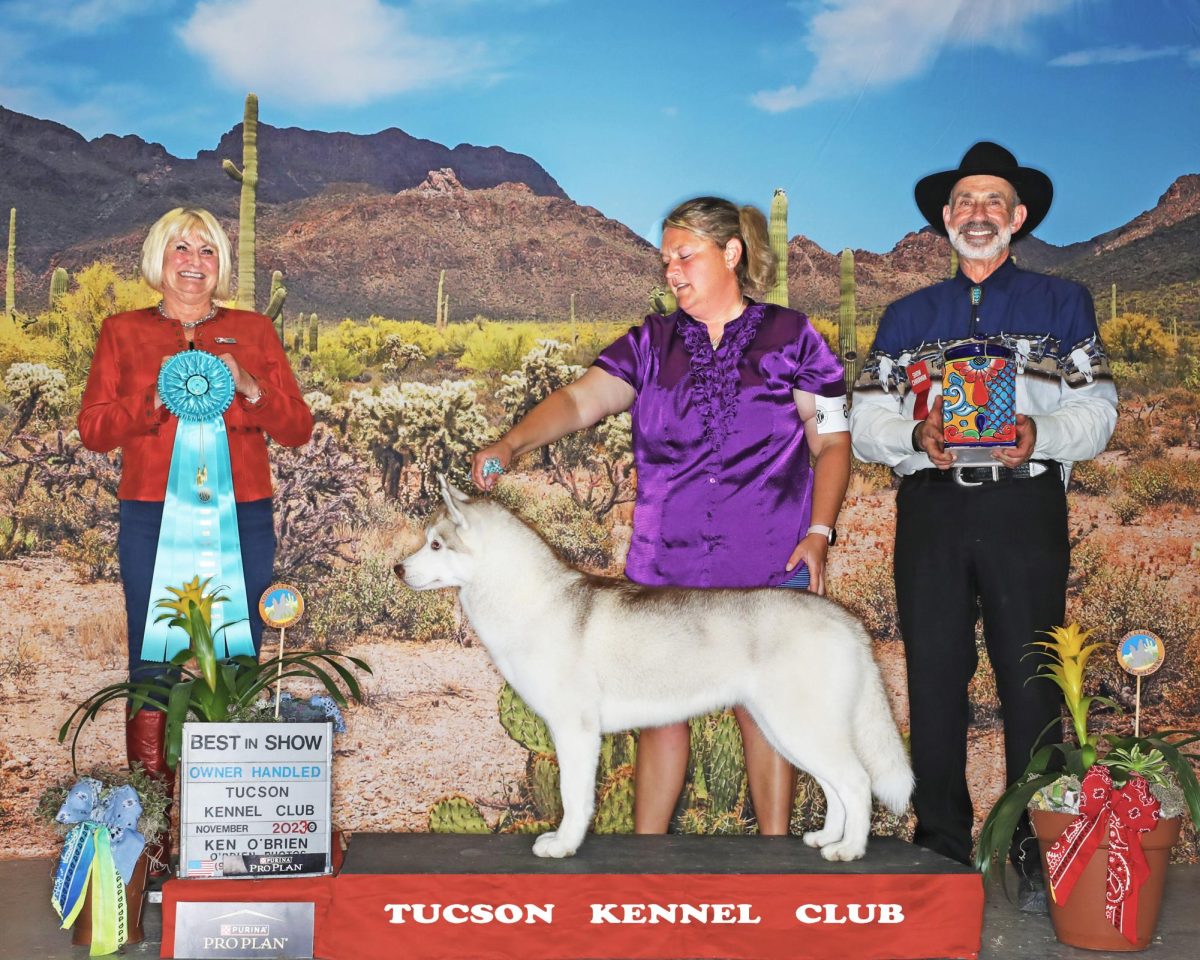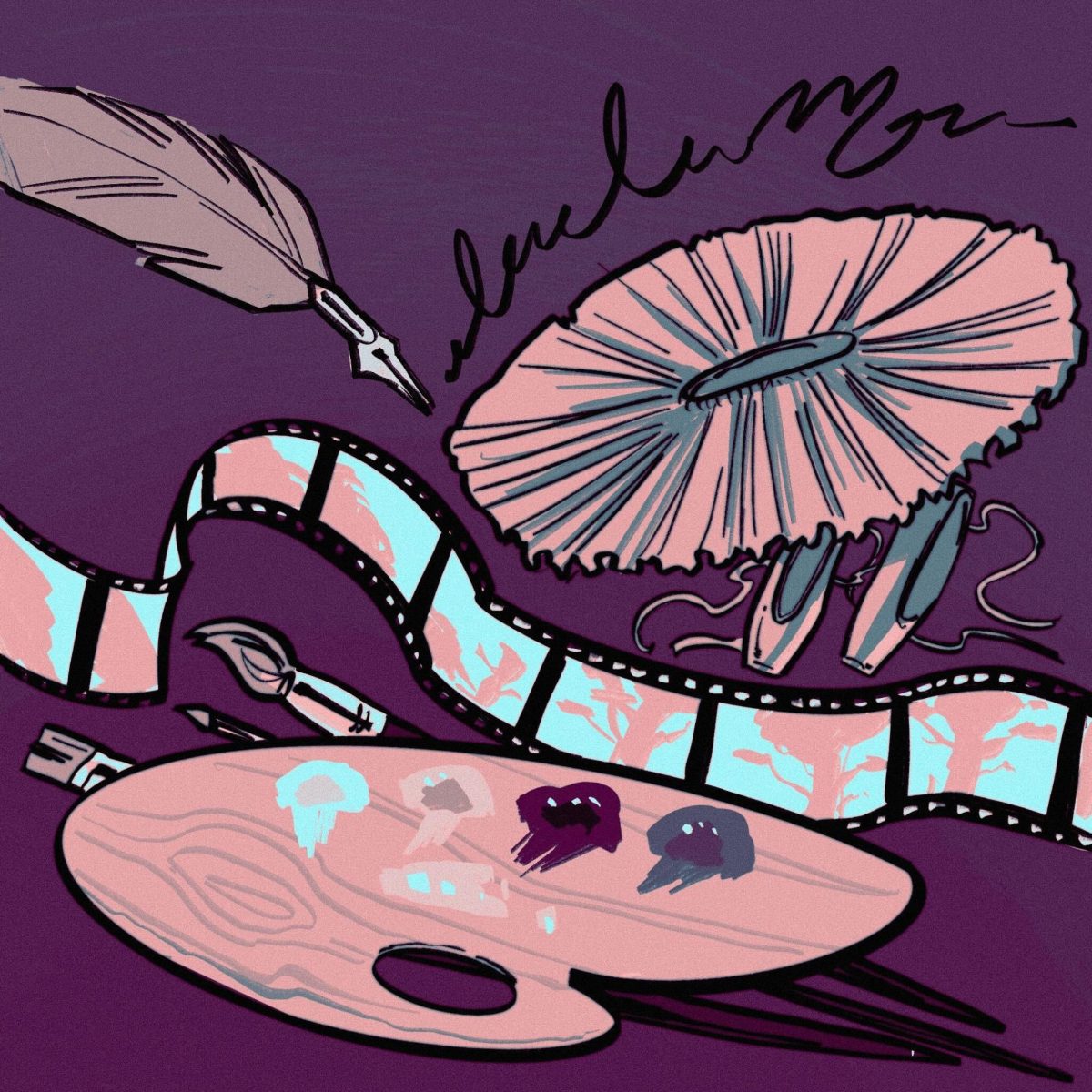There are many things that make this October unusual. The record breaking heat wave, a particularly turbulent election year and the late season wildfires throwing ashes in the air. That being said, we still walk to work or school, on the same concrete sidewalk everyday with layers of smooth stone, asphalt or perfectly tended lawn beneath our shoes.
On the east side of Centennial Hall at the University of Arizona campus, endless coarse stone gives way to a smooth, sandy path. A black veil of fabric facades line the farthest edges of the path, but within these bounds are potted plants and stylized chairs. A canopy of trees, plus the ever-present school buildings, provide shade from the harsh sun.
The intense road noises and sounds of an industrial complex are suppressed by the location. Instead, you hear the songs of birds along with a variety of musical tunes permeating the space. Here, life is not only audible. It is also visible in the forms of birds, bees and small lizards. This space is known as The Cuk Ṣon Audiorama.
Its name, pronounced: Sh-ou-kh_son, comes from the Tohono O’Odham word, which translates to “village at the base/foot of the black mountain,” and was the original name for Tucson. And the mountain is the one we call “A” Mountain. The land and name were transformed into modern day Tucson, however, this audiorama was meant to evoke the spirit of what Tucson was and, in some ways, still is.
According to musician and head designer Carlos Arzate, the audiorama was a concept he learned about while on a trip with his wife to Mexico City.
“The thing about the one [audiorama] in Mexico City, the more often I went to it was like a sacred space. So, it was in this hallowed space. It felt uniquely Mexico City and I thought, ‘If we were going to do this in Tucson, what would feel uniquely Tucson?’” Arzate said.
Arzate is a local Tucsonan who follows his passion of music while making a living with his landscaping and hardscaping company, Arzate Design Group. His team, along with generous donations from Old Pueblo Hemp Co., Ponderosa Cactuses and Civano Growers brought this project together.
Arizona Arts Live helped actualize the design. The executive and artistic director Chad Herzog had a hand in creating the concept.
“It just so happens that the second artists we did [host performances for] was Carlos and his family,” Herzog said.
He also said that Arzate had designed his backyard.
“Flash forward 4 years later. It was February of 2024. We were in Mexico city for my wife’s birthday and we happened to stumble upon an audiorama,” Herzog said. “We learned what an audiorama is. We were in Condesa the next day, and we were leaving another audiorama when we locked eyes across the street with Carlos and his wife.”
This chance encounter brought the two together to produce the idea of the Tucson audiorama.
Despite the inherent usefulness of the space to many people, it is not a permanent fixture. It is set to be removed next month. Wendy Lotze, an instructor for the UA school of architectural design, reminds us that there is beauty in impermanence.
“We tend to think of landscapes as being permanent, but they are, sort of, inherently transitory,” Lotze said. “Plants live and die because they have cycles of life. So, the idea of having a space that can temporarily become a garden, and then revert to its original condition, is something, I think, is really intriguing.”
The audiorama will be removed after Nov. 12. For more information, visit the Arizona Arts Live website.









